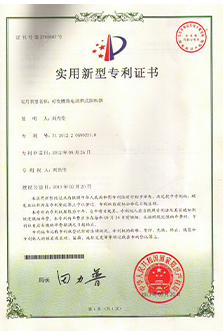 Afrikaans
Afrikaans  Albanian
Albanian  Amharic
Amharic  Arabic
Arabic  Armenian
Armenian  Azerbaijani
Azerbaijani  Basque
Basque  Belarusian
Belarusian  Bengali
Bengali  Bosnian
Bosnian  Bulgarian
Bulgarian  Catalan
Catalan  Cebuano
Cebuano  Corsican
Corsican  Croatian
Croatian  Czech
Czech  Danish
Danish  Dutch
Dutch  English
English  Esperanto
Esperanto  Estonian
Estonian  Finnish
Finnish  French
French  Frisian
Frisian  Galician
Galician  Georgian
Georgian  German
German  Greek
Greek  Gujarati
Gujarati  Haitian Creole
Haitian Creole  hausa
hausa  hawaiian
hawaiian  Hebrew
Hebrew  Hindi
Hindi  Miao
Miao  Hungarian
Hungarian  Icelandic
Icelandic  igbo
igbo  Indonesian
Indonesian  irish
irish  Italian
Italian  Japanese
Japanese  Javanese
Javanese  Kannada
Kannada  kazakh
kazakh  Khmer
Khmer  Rwandese
Rwandese  Korean
Korean  Kurdish
Kurdish  Kyrgyz
Kyrgyz  Lao
Lao  Latin
Latin  Latvian
Latvian  Lithuanian
Lithuanian  Luxembourgish
Luxembourgish  Macedonian
Macedonian  Malgashi
Malgashi  Malay
Malay  Malayalam
Malayalam  Maltese
Maltese  Maori
Maori  Marathi
Marathi  Mongolian
Mongolian  Myanmar
Myanmar  Nepali
Nepali  Norwegian
Norwegian  Norwegian
Norwegian  Occitan
Occitan  Pashto
Pashto  Persian
Persian  Polish
Polish  Portuguese
Portuguese  Punjabi
Punjabi  Romanian
Romanian  Russian
Russian  Samoan
Samoan  Scottish Gaelic
Scottish Gaelic  Serbian
Serbian  Sesotho
Sesotho  Shona
Shona  Sindhi
Sindhi  Sinhala
Sinhala  Slovak
Slovak  Slovenian
Slovenian  Somali
Somali  Spanish
Spanish  Sundanese
Sundanese  Swahili
Swahili  Swedish
Swedish  Tagalog
Tagalog  Tajik
Tajik  Tamil
Tamil  Tatar
Tatar  Telugu
Telugu  Thai
Thai  Turkish
Turkish  Turkmen
Turkmen  Ukrainian
Ukrainian  Urdu
Urdu  Uighur
Uighur  Uzbek
Uzbek  Vietnamese
Vietnamese  Welsh
Welsh  Bantu
Bantu  Yiddish
Yiddish  Yoruba
Yoruba  Zulu
Zulu conveyor parts
Understanding Conveyor Parts The Backbone of Material Handling Systems
Conveyor systems are vital components in various industries, from manufacturing plants to distribution centers. They play a critical role in the efficient movement of materials, enhancing productivity and ensuring smooth operations. However, the effectiveness of a conveyor system largely depends on its individual parts. Understanding these components can not only improve operational efficiency but also aid in proper maintenance and troubleshooting.
Key Components of a Conveyor System
1. Belt The belt is perhaps the most recognizable part of a conveyor system. It is responsible for carrying materials from one point to another. Conveyor belts can be made from various materials, including rubber, plastic, or metal, depending on the application. The choice of belt material impacts the system's durability, flexibility, and load capacity.
2. Rollers Rollers support the conveyor belt and facilitate its movement. They are usually made from metal or plastic and come in different types, including carrier, return, and impact rollers. Properly functioning rollers reduce friction, which is essential for the efficiency of the conveyor system.
3. Drive System The drive system is crucial for the operation of conveyor systems. It typically consists of a motor, gearbox, and pulleys. The motor provides the necessary power to move the belt, whereas the gearbox controls the speed and torque. The arrangement of the drive system can vary, but its effectiveness is fundamental to the overall performance of the conveyor.
4. Idlers Idlers are rollers that support the belt and help maintain its alignment. They play a significant role in load support and ensuring that the belt doesn’t sag or misalign, which can lead to operational issues. There are various types of idlers, such as trough, flat, and impact idlers, each serving a specific purpose.
5. Pulleys Pulleys are essential for changing the direction of the belt and are located at both ends of the conveyor. They are crucial for maintaining belt tension and are available in various styles, including drive, tail, and take-up pulleys. Properly functioning pulleys prevent belt slippage and ensure smooth operation.
conveyor parts

6. Frame The conveyor frame is the backbone of the entire system. It supports all other components and is typically made from steel or aluminum. The design of the frame can influence the stability, strength, and overall layout of the conveyor system. A well-constructed frame helps cope with the stresses of the operation while ensuring safety and longevity.
7. Control System Modern conveyor systems often come equipped with control systems that enhance automation and efficiency. These systems can include sensors, PLCs (Programmable Logic Controllers), and software interfaces, allowing for precise control over the conveyor's speed, direction, and overall operations.
Maintenance of Conveyor Parts
Regular maintenance of conveyor parts is crucial for preventing breakdowns and prolonging the lifespan of the system. Key maintenance practices include
- Routine Inspections Regularly check for wear and tear on the belt, rollers, and other components to identify and address issues before they escalate. - Lubrication Ensuring that moving parts are adequately lubricated reduces friction and wear, promoting smooth operation. - Alignment Checks Maintaining proper alignment of the belt and components is essential to prevent misalignment issues, which can cause undue wear and tear.
Conclusion
The efficiency of conveyor systems hinges on the proper function of each individual part. By understanding the key components and their roles within the system, operators can enhance their material handling processes, ensure smooth operations, and significantly reduce downtime. Regular maintenance and timely replacement of worn-out parts can lead to a more reliable and productive conveyor system, ultimately contributing to the success of the business. Whether you are in manufacturing, warehousing, or logistics, recognizing the importance of conveyor parts will aid in optimizing your operations.
-
Revolutionizing Conveyor Reliability with Advanced Rubber Lagging PulleysNewsJul.22,2025
-
Powering Precision and Durability with Expert Manufacturers of Conveyor ComponentsNewsJul.22,2025
-
Optimizing Conveyor Systems with Advanced Conveyor AccessoriesNewsJul.22,2025
-
Maximize Conveyor Efficiency with Quality Conveyor Idler PulleysNewsJul.22,2025
-
Future-Proof Your Conveyor System with High-Performance Polyurethane RollerNewsJul.22,2025
-
Driving Efficiency Forward with Quality Idlers and RollersNewsJul.22,2025





























